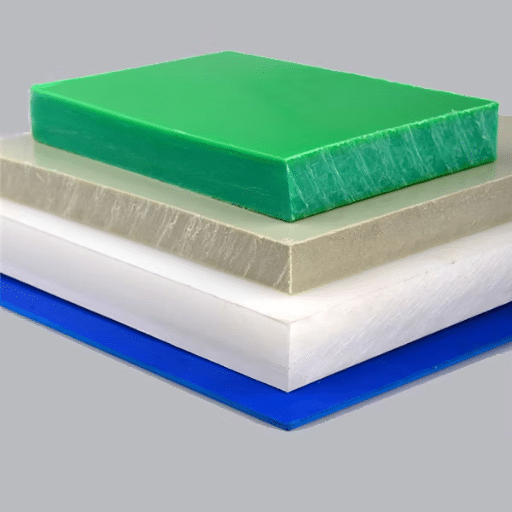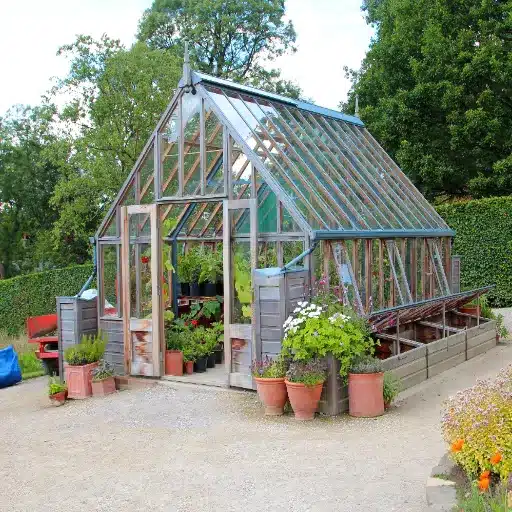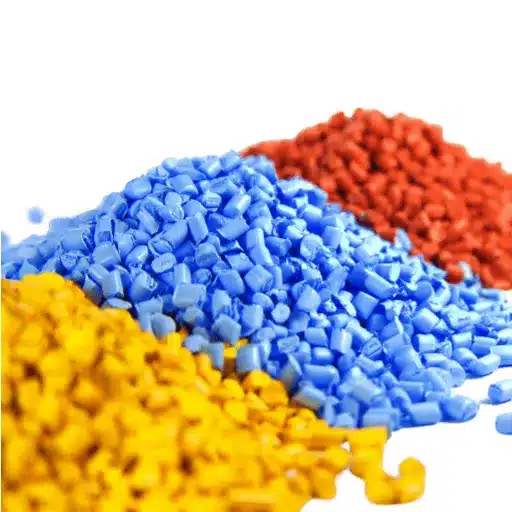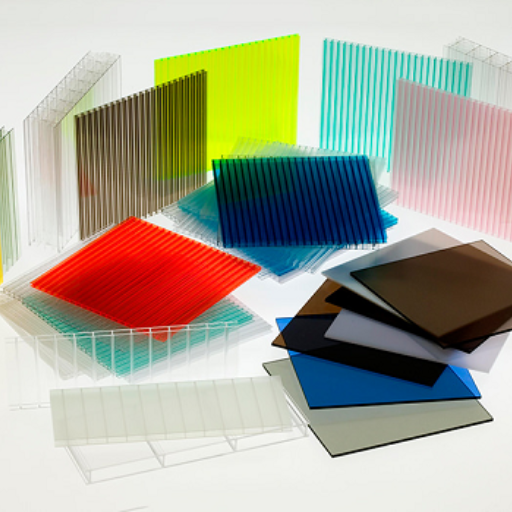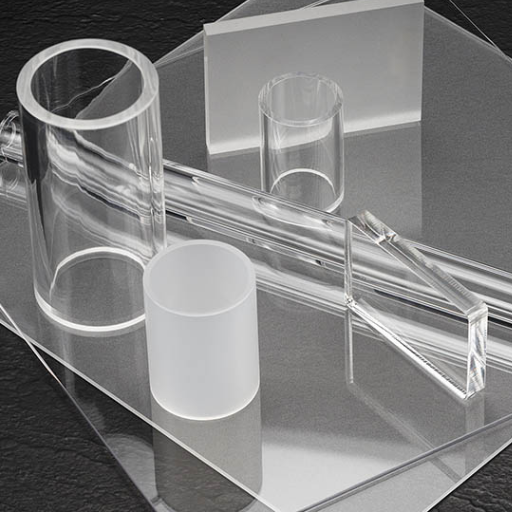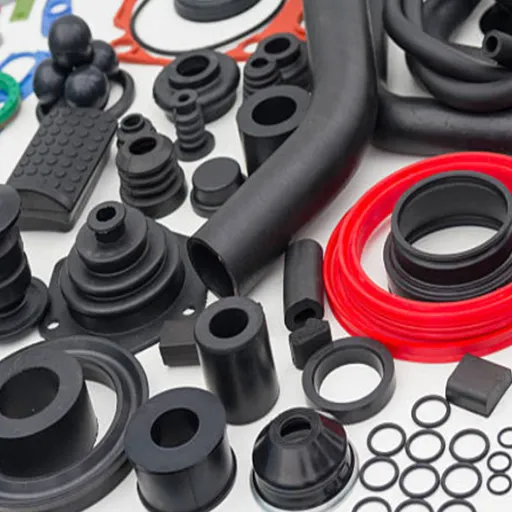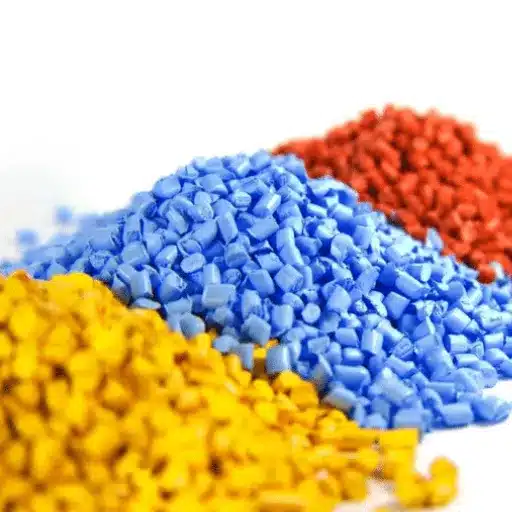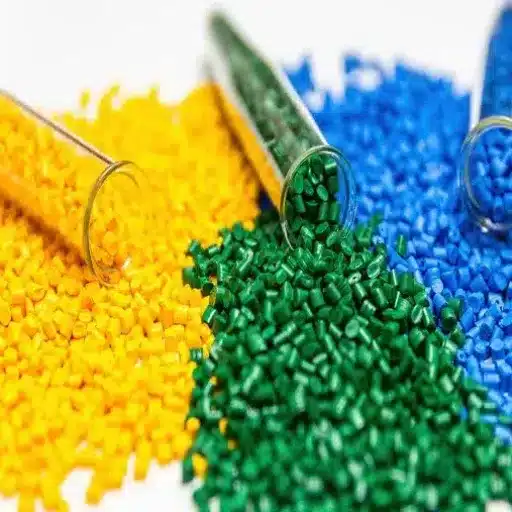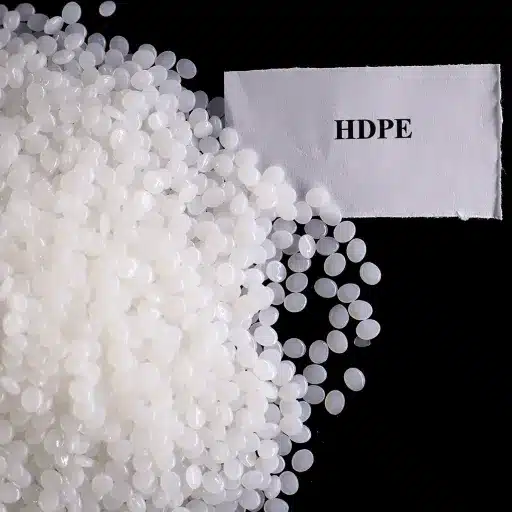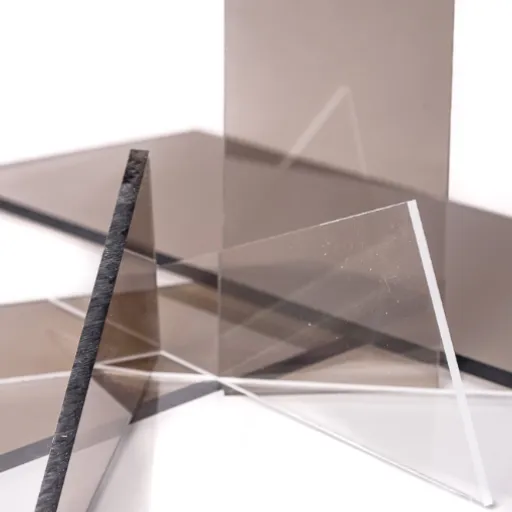High-Density Polyethylene (HDPE) has become a staple material in the world of plastic manufacturing, particularly in the realm of injection molding. Renowned for its durability, versatility, and cost-efficiency, HDPE is the backbone of countless products we encounter in our daily lives, from sturdy containers to intricate industrial parts. But what exactly makes HDPE so effective in injection molding, and why do manufacturers and product designers consistently turn to this material for their projects? This blog dives deep into the unique properties of HDPE, the advantages it offers in injection molding, and the key considerations for utilizing this powerhouse plastic. Whether you’re a manufacturing professional, a product designer, or simply curious about the science behind plastic production, this article will equip you with valuable insights into HDPE injection molding and its pivotal role in modern manufacturing.
Introduction to HDPE

What is HDPE?
HDPE, or High-Density Polyethylene, is a versatile thermoplastic polymer made from petroleum. Known for its high strength-to-density ratio, HDPE is one of the most widely used plastics in the world. It is a highly durable material, resistant to impact, chemicals, and moisture, making it ideal for a variety of applications, from packaging and piping to cutting boards and toys. This type of plastic is lightweight, recyclable, and cost-effective, further contributing to its popularity across industries. With its exceptional performance characteristics, HDPE plays a critical role in modern manufacturing, especially in injection molding, where precision and durability are key.
Properties of High-Density Polyethylene
High-Density Polyethylene (HDPE) is a thermoplastic polymer characterized by its high strength-to-density ratio, making it a preferred material for heavy-duty applications. Its key properties include excellent impact resistance, which ensures durability even under the toughest conditions. HDPE is also highly resistant to corrosion, chemicals, and moisture, enabling it to perform effectively in harsh environments. Furthermore, it exhibits UV resistance, making it suitable for outdoor use without significant degradation over time.
🔬 Key Material Properties
💪 Impact Resistance
Ensures durability under tough conditions
🧪 Chemical Resistance
Performs effectively in harsh environments
☀️ UV Resistance
Suitable for outdoor applications
🪶 Lightweight
Easy handling and transportation
🍽️ Food-Safe
Non-toxic for food contact
♻️ Recyclable
Environmentally friendly option
Another notable property of HDPE is its lightweight nature, which allows for easy handling and transportation while maintaining structural integrity. It is also non-toxic and food-safe, making it ideal for use in applications such as water pipes, containers, and cutting boards. HDPE is recyclable, reflecting its environmentally friendly aspect, and can be repurposed into other products, reducing waste and supporting sustainability goals. This combination of properties contributes to HDPE’s versatility and widespread acceptance across numerous industries, including construction, automotive, and consumer goods.
Applications of HDPE in Manufacturing
High-density polyethylene (HDPE) plays a crucial role in modern manufacturing due to its durability, flexibility, and cost-effectiveness. One of its prominent applications is in the production of durable plastic bottles and containers used for storing beverages, cleaning agents, and household chemicals. HDPE is also extensively used in manufacturing corrosion-resistant piping systems, particularly in the water and gas industries, as it can withstand extreme conditions and chemical exposure.
| Industry | HDPE Applications | Key Benefits |
|---|---|---|
| Packaging | Bottles, containers, caps | Durability, chemical resistance |
| Construction | Piping systems, plastic lumber | Corrosion resistance, longevity |
| Automotive | Fuel tanks, dashboards | Lightweight, impact resistant |
| Consumer Goods | Toys, cutting boards, furniture | Safety, recyclability |
| 3D Printing | Prototypes, custom parts | Design flexibility, rapid production |
Additionally, HDPE’s lightweight and impact-resistant properties make it a popular choice for automotive fuel tanks and dashboards, contributing to energy efficiency with reduced overall vehicle weight. With sustainability becoming a priority, HDPE’s recyclability allows manufacturers to incorporate recycled materials into new products, such as outdoor furniture, plastic lumber, and playground equipment. Furthermore, industries increasingly leverage advanced HDPE blends for 3D printing applications, enabling rapid prototyping and innovative designs. These versatile applications underscore HDPE’s significance in achieving functional, economical, and sustainable solutions across sectors.
The Process of Injection Molding
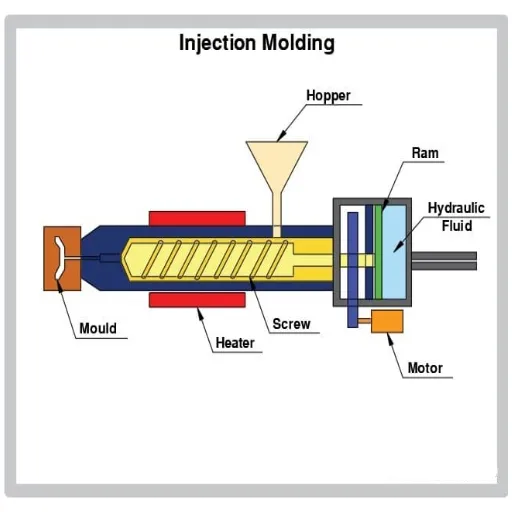
Overview of Injection Molding
Injection molding is a highly efficient manufacturing process used to produce a wide range of plastic parts by injecting molten material into a mold. This technique is particularly advantageous for creating complex shapes with high precision and minimal waste. The process begins with the raw material, often plastic pellets like HDPE, being fed into a heated barrel. Once melted, the material is injected into a custom-designed mold cavity under high pressure. After cooling and solidifying, the mold opens, and the finished part is ejected.
📊 Industry Impact
According to the latest data, injection molding continues to dominate in industries such as automotive, packaging, medical devices, and electronics due to its cost-effectiveness and scalability. Advances in technology, including AI-driven process monitoring and the integration of sustainable materials, have enhanced the efficiency and environmental friendliness of injection molding. This makes it a critical method in modern manufacturing, meeting both production and sustainability goals.
Steps in HDPE Injection Molding
- Material Preparation
The process begins with the preparation of High-Density Polyethylene (HDPE) pellets. These pellets are dried, if necessary, to remove any moisture that could compromise the molding process or the final product’s quality.
- Melting and Plasticization
The HDPE pellets are fed into a heated barrel, where they are subjected to high temperatures ranging between 350°F to 450°F. The heat and the rotating screw inside the barrel melt and plasticize the HDPE material into a homogeneous molten state.
- Injection
The molten HDPE is then injected into a pre-designed mold using significant pressure, typically ranging from 10,000 to 30,000 psi. This ensures that the material fully fills the cavity and conforms to the mold’s intricate details, creating a precise shape.
- Cooling
Once injected, the mold is cooled using a water or air cooling system. This step solidifies the HDPE inside the mold, ensuring it retains its desired shape and structural integrity. Cooling times can vary depending on the product’s complexity and thickness.
- Ejection
After the material has completely cooled and solidified, the mold opens, and the formed part is ejected. Ejector pins or other mechanisms are commonly used to safely remove the product from the mold.
- Trimming and Finishing
Any excess material, such as flash, is trimmed away, and the product is inspected for quality assurance. Additional finishing processes may include surface treatments or assembly steps, depending on the end-use requirements.
- Recycling and Reuse
Scrap material generated during trimming, or defective parts, can often be ground down and recycled back into the injection molding process, reducing waste and enhancing sustainability.
By integrating AI-powered process controls and advanced monitoring tools, the efficiency and accuracy of these steps are drastically improved, ensuring higher-quality products with minimized material waste. This technology-driven approach also aligns with the ongoing push for sustainable manufacturing practices involving HDPE products.
Types of Injection Molds Used for HDPE
Injection molding for HDPE involves various types of molds, each tailored to specific applications and product requirements. The most common types include:
| Mold Type | Description | Best For |
|---|---|---|
| Two-Plate Molds | Simplest design with two plates that separate to release the part | Flat or simple-shaped products |
| Three-Plate Molds | Additional plate for complex designs with intricate gates and runners | Detailed parts with high precision |
| Hot Runner Molds | Heated manifold system keeps material molten during injection | Large-scale production, reduced waste |
| Cold Runner Molds | Unheated runners that require post-production trimming | Smaller production runs, cost-effective |
| Family Molds | Produces multiple parts in one cycle | Different components simultaneously |
By leveraging modern mold designs and combining them with advanced injection molding technologies, manufacturers can achieve superior precision, maximize material efficiency, and adapt to the growing demand for sustainable HDPE products.
Advantages of HDPE in Injection Molding
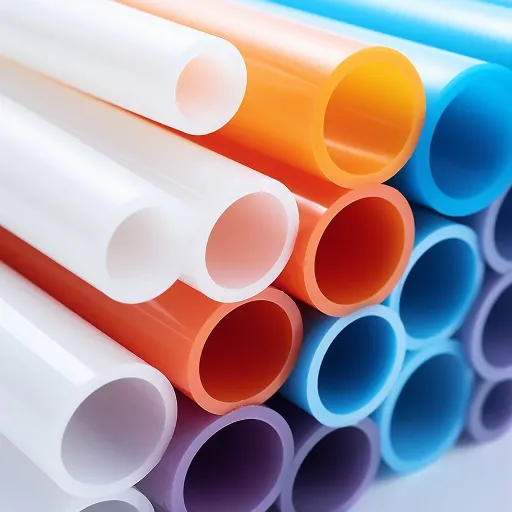
Durability and Impact Resistance
HDPE offers exceptional durability and impact resistance, making it a preferred choice for a wide range of applications. Its molecular structure provides high tensile strength and the ability to withstand significant stress without cracking or breaking. According to the latest data, industries such as automotive, packaging, and construction benefit significantly from HDPE’s resilience, as it performs reliably under tough environmental conditions.
🛡️ Durability
High tensile strength and stress resistance without cracking or breaking
🧪 Chemical Resistance
Excellent resistance to chemicals and moisture for long lifespan
💥 Impact Resistance
Ideal for fuel tanks, industrial containers, and protective coatings
This durability also includes excellent resistance to chemicals and moisture, ensuring a long lifespan for products made using HDPE. Additionally, its impact resistance makes it particularly well-suited for items like fuel tanks, industrial containers, and protective coatings, where strength and reliability are critical.
Cost-Effectiveness of HDPE
HDPE is widely recognized as a cost-effective material due to its affordability and long-term durability. Its relatively low manufacturing cost compared to other polymers makes it an economical choice for industries that require large-scale production. Furthermore, HDPE’s longevity reduces the need for frequent replacement, offering significant savings over time.
💰 Cost-Benefit Analysis
- Low Manufacturing Cost: Economical for large-scale production
- Long-Term Durability: Reduces replacement frequency and costs
- Recyclability: Repurposed materials lower costs and minimize waste
- Performance Balance: Optimal combination of budget efficiency and quality
According to the latest data, its recyclability further enhances its value, as recycled HDPE can be repurposed into a variety of products, lowering material costs and minimizing waste. This balance of low upfront costs and long-term savings makes HDPE an attractive material for industries prioritizing both performance and budget efficiency.
Design Flexibility with HDPE Molding Services
HDPE molding services offer unparalleled design flexibility, providing manufacturers with the ability to create complex, custom shapes tailored to specific applications. The material’s lightweight yet durable nature makes it ideal for a wide range of industries, including automotive, construction, and packaging.
🎨 Design Advantages
Advanced molding techniques, such as injection and blow molding, allow for precise engineering of components, ensuring optimal performance and minimal material waste. According to the latest data, HDPE’s adaptability supports innovative product designs while maintaining cost efficiency, enabling businesses to meet diverse consumer needs without compromising on quality or sustainability. This versatility cements HDPE as a go-to solution for modern manufacturing challenges.
Challenges in HDPE Injection Molding
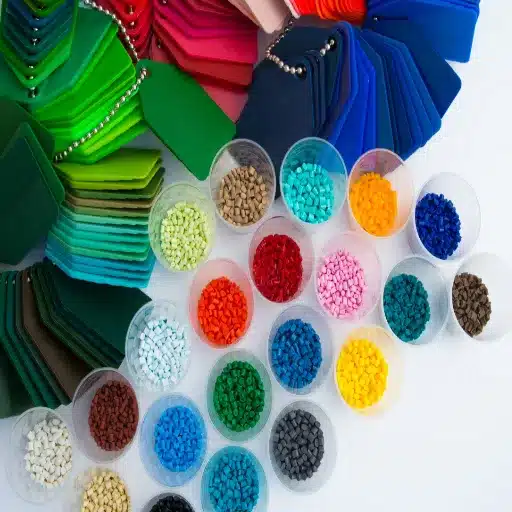
Common Issues During the Molding Process
HDPE injection molding, while highly effective, is not without its challenges. A common issue faced during the process is the occurrence of warping or deformation, which can result from uneven cooling rates or improper mold designs. Burn marks are another frequent problem, often caused by excessive heat or trapped air within the mold. Additionally, sink marks may appear when there is inconsistent material flow or insufficient cooling time. Flashing, or excess material seeping out of the mold cavity, can also arise due to improper clamping pressure.
| Common Issue | Cause | Solution |
|---|---|---|
| Warping/Deformation | Uneven cooling rates, improper mold design | Optimize cooling systems, improve mold design |
| Burn Marks | Excessive heat, trapped air | Control temperature, improve venting |
| Sink Marks | Inconsistent material flow, insufficient cooling | Adjust flow rates, extend cooling time |
| Flashing | Improper clamping pressure | Adjust clamping force, check mold alignment |
According to the latest data, addressing these issues requires a combination of precise temperature control, optimized cooling systems, and regular maintenance of molds. By integrating real-time monitoring technologies and advanced analytics, manufacturers can identify and resolve process deviations efficiently, ensuring a more consistent and reliable final product. Utilizing such data-driven approaches not only addresses common issues but also enhances overall production quality in HDPE molding.
Impact of Material Quality on Molding
The quality of the raw material has a profound influence on the efficiency and outcome of the molding process. High-quality HDPE material ensures better flow characteristics, reducing the chances of defects such as warping, shrinkage, or uneven thickness in the final product. Impurities or inconsistencies in the material, on the other hand, can compromise the structural integrity and appearance of the molded goods.
✓ Quality Impact Checklist
- Better flow characteristics with high-quality material
- Reduced defects (warping, shrinkage, uneven thickness)
- Enhanced compatibility with cutting-edge technologies
- Improved cycle times and reduced waste
- Higher structural integrity and appearance
Furthermore, using premium-grade materials often enhances compatibility with cutting-edge molding technologies, leading to improved cycle times and reduced waste. According to recent insights, manufacturers leveraging data-driven approaches optimize material selection by analyzing performance metrics, which helps minimize production errors and boost both productivity and product quality.
Environmental Considerations and Recycling of HDPE
High-density polyethylene (HDPE) is recognized for its recyclability and role in reducing environmental impact when managed responsibly. HDPE is widely recycled into products such as piping, bottles, and containers, making it a valuable material in the circular economy.
♻️ Environmental Benefits
📉 Emissions Reduction
Up to 50% lower greenhouse gas emissions vs. virgin production
🔬 Chemical Recycling
Breaks down HDPE into original monomers for reuse
🌍 Circular Economy
Valuable material for sustainable product cycles
According to the latest data, recycling HDPE significantly lowers the demand for raw petrochemical resources and reduces greenhouse gas emissions by up to 50% compared to virgin material production. Innovations in recycling technologies, such as chemical recycling, now enable the breakdown of HDPE into its original monomers, further enhancing its sustainability by allowing it to be reused without degrading quality. However, challenges still exist, including contamination in recycling streams and limited infrastructure in certain regions, which need to be addressed to fully harness HDPE’s environmental potential.
Innovations in HDPE Injection Molding

Recent Advances in Molding Technology
Recent advances in HDPE injection molding technology have focused on improving precision, cycle times, and energy efficiency. Innovations such as smart molding machines equipped with AI-driven monitoring systems can optimize production by adjusting parameters in real time, ensuring consistent product quality.
🚀 Technological Innovations
- AI-Driven Monitoring: Real-time parameter adjustments for consistent quality
- Multi-Cavity Molds: Enhanced production throughput
- Advanced Cooling Techniques: Reduced production cycles
- Energy Efficiency: Lower consumption and reduced waste
- Material Integrity: Maintained quality throughout faster cycles
Furthermore, the development of multi-cavity molds and advanced cooling techniques has significantly reduced production cycles, enhancing throughput while maintaining material integrity. These advancements not only streamline manufacturing processes but also contribute to reducing energy consumption and production waste, further aligning with sustainability goals in modern manufacturing.
Potential Alternatives to HDPE: A Comparative Analysis
High-Density Polyethylene (HDPE) is widely recognized for its versatility, durability, and cost-effectiveness; however, growing environmental concerns have driven interest in alternative materials. Potential substitutes include Bioplastics, Polypropylene (PP), and Recycled Plastics, each offering unique benefits and challenges.
Comparison of HDPE Alternatives
1. Bioplastics
Advantages: Derived from renewable sources like corn starch or sugarcane, significantly reduce dependency on fossil fuels, smaller carbon footprint
Challenges: Scalability issues, higher costs, degradation challenges in non-industrial conditions
2. Polypropylene (PP)
Advantages: Similar chemical resistance and strength to HDPE, enhanced heat resistance, ideal for food packaging and automotive components
Challenges: Still relies on fossil fuels, similar recycling challenges to HDPE
3. Recycled Plastics
Advantages: Promotes circular economy, reduces environmental waste, improved quality through advanced sorting technologies
Challenges: Depends on waste management infrastructure and consumer participation
While no single alternative can fully replicate HDPE’s properties and practicality, a combined approach leveraging bioplastics, improved recycling practices, and material innovation offers the most promising path toward a sustainable future. Further research and investment in alternative technologies will play a pivotal role in reducing environmental impacts while meeting global manufacturing demands.
Future Trends in HDPE Molding Services
The future of HDPE molding services is shaped by advancements in technology, consumer demand for sustainability, and industry shifts toward efficiency. According to the latest data, there is an increasing interest in integrating automation and artificial intelligence (AI) into manufacturing processes. These technologies allow for enhanced precision, reduced production time, and lower costs, which are becoming critical factors as global competition intensifies.
🔮 Emerging Trends
- Automation & AI Integration: Enhanced precision, reduced time and costs
- Sustainable Recycling: Closed-loop systems and increased recycled HDPE usage
- 3D Printing Technology: Greater design flexibility and rapid prototyping
- Biomass-Based Feedstocks: Alternative ethylene production from renewable sources
- Localization & On-Demand Production: Supported by advanced manufacturing technologies
- Biodegradable Additives: Hybrid materials balancing performance and sustainability
Sustainability remains a driving trend, with a significant focus on incorporating recycled HDPE into production cycles. Recent search trends indicate a growing demand for eco-friendly products, with manufacturers exploring closed-loop recycling systems to reduce waste and meet stricter environmental regulations. Additionally, innovations in biodegradable additives and improved blending techniques are gaining traction as companies seek to create hybrid materials that balance performance and sustainability.
Another emerging trend is the utilization of 3D printing technology in HDPE molding services. This approach offers greater design flexibility and rapid prototyping capabilities, allowing manufacturers to meet customized and small-batch orders efficiently. Global shifts toward localization have also emphasized the importance of on-demand production, supported by these advanced technologies.
Furthermore, research into alternative feedstocks for HDPE production, such as biomass-based ethylene, is gathering attention. These alternatives cater to the rising consumer awareness of carbon footprints while addressing resource scarcity concerns. Ultimately, the melding of cutting-edge technologies, sustainability initiatives, and innovative material science is set to redefine HDPE molding services in the coming years, reflecting a market that prioritizes both environmental responsibility and industrial innovation.
Frequently Asked Questions
What is HDPE injection molding and how does it use HDPE plastic?
HDPE injection molding is a production process that melts HDPE resin and injects it into a mold to produce molded parts like plastic milk jugs and food storage containers. The process leverages the commodity plastic’s overall toughness and chemical and impact resistance to produce parts for consumer and industrial products. Injection molding machines control melt temperature and pressure to ensure consistent injection molded HDPE quality and mechanical strength. HDPE plastic injection molding is considered low-cost at scale due to economies of scale and the versatility of shapes and sizes it can produce. Many injection molders offer injection molding service for custom HDPE components and high-volume runs.
What are the advantages of using HDPE material for plastic injection molding?
HDPE material provides high impact resistance and high impact toughness while remaining a lower in cost option compared with many engineering plastics. Its resistance to oxidant and reducing agents and good chemical and impact resistance make it suitable for food storage and many industrial applications. The versatile plastic is easy to process on common injection molding machines and yields thin-walled and complex parts when the mold and process are optimized. HDPE’s mechanical strength and overall toughness support durable injection molded products used across a wide array of industries. When designed for manufacturing (DFM), HDPE injection molding often reduces cycle time and material waste, lowering production process costs.
What injection molding applications are best suited for injection molded HDPE parts?
Injection molded HDPE is widely used for consumer products like plastic milk jugs and food storage containers as well as industrial components where chemical resistance is required. The material’s toughness and low-cost production make it ideal for disposable and reusable containers, caps, fittings, and larger molded parts for utility and construction. HDPE also appears in medical applications and consumer and industrial products where approved by the FDA for food contact applications. Its ability to produce thin-walled and complex parts allows designers to create custom parts across a variety of industries. Many companies choose HDPE for injection molding applications that need a balance of cost, durability, and ease of production.
How do resin selection and melt temperature affect injection molding service outcomes?
Selecting the right HDPE resin grade is critical because variations in density and additives affect melt flow, toughness, and final part performance. Melt temperature and holding pressure directly influence the formation of molded parts, surface finish, and dimensional stability, so injection molding machines must be calibrated for each plastic resin. Choosing high-flow or high-impact HDPE resin can enable thin-walled or large complex parts while preserving mechanical strength. Injection molding service providers often test resin behavior under processing conditions to optimize cycle time and reduce scrap. Proper resin choice combined with design for manufacturing ensures consistent injection molded products and reduces downstream costs.
What design for manufacturing (DFM) considerations are important for custom HDPE injection molding?
Design for manufacturing for HDPE injection molding emphasizes part geometry that supports flow, cooling, and ejection to reduce defects and cycle time. Draft angles, uniform wall thickness, and gate placement help avoid sink marks and warpage, especially in thin-walled and complex parts. Collaborating with an injection molder early can guide decisions about tooling, the HDPE injection molding machine, and post-processing needs for custom parts. Engineers should account for shrinkage, mechanical strength requirements, and potential stress concentrators when designing molded parts. DFM ultimately helps lower cost, improve part performance, and enables economies of scale for production process runs.
Is HDPE safe for food storage and medical applications compared to other plastics?
HDPE is widely used for food storage and consumer products such as milk jugs and food storage containers because many HDPE resin grades are approved by the FDA for food contact. Its chemical resistance and low permeability make it suitable for storing liquids and foods while maintaining overall toughness and durability. For medical applications, specific grades of HDPE and validated injection molding processes are required to meet regulatory and sterilization needs. While HDPE is less rigid than some engineering plastics, its versatility and cost-effectiveness make it a practical choice for many consumer and industrial products. When higher performance is needed, designers may consider reinforced or alternative engineering plastics depending on application demands.
What are potential alternatives to HDPE for injection molded parts and when should they be considered?
Potential alternatives to HDPE include polypropylene, polycarbonate, ABS, and other engineering plastics that offer different balances of stiffness, heat resistance, and aesthetic finish. Polypropylene is often considered when lower density or better chemical resistance to certain solvents is needed, while polycarbonate or ABS may be chosen for higher mechanical strength and impact resistance at elevated temperatures. Alternatives should be considered when the production process requires higher melt temperature tolerance, superior dimensional stability, or specific regulatory properties not provided by HDPE. Cost, availability of resin, and the capabilities of injection molding machines and tooling also influence the choice between HDPE and other plastic resin options. Collaborating with an injection molding service can help evaluate the trade-offs and select the best material for the intended injection molding applications.
Reference Sources
- Texas A&M University – Injection Molding Introduction: A comprehensive introduction to the injection molding process, including the use of HDPE and other materials. Injection Molding Introduction
- Texas State University – Recycling HDPE Plastic: A project focused on recycling HDPE plastic and converting it into new products through injection molding. M2.04 – Injection Molding System Recycling HDPE Plastic
- Eastern Illinois University – Thesis on Recycled HDPE: A study examining the properties of composites formed by injection molding recycled HDPE, including tensile strength and hardness. An Investigation of Recycled High Density Polyethylene






